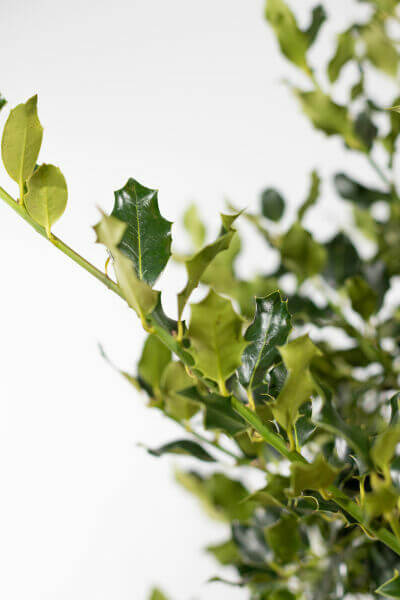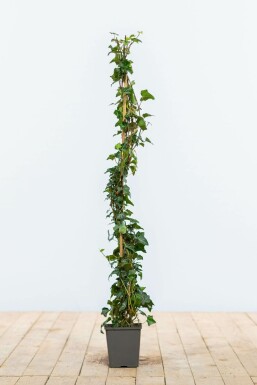Hedge Plants For Garden Edges
Hedge Plants For Garden Edges
Blog Article
Hedge Plants For Creating Shade
Boost your garden's allure with lush hedge ranges such as Yew (Taxus), Thuja, Laurel, Photinia, and Bamboo, commemorated for their structural stability and environmental benefits.
Yew and Thuja supply evergreen coverage and winter strength, while Laurel uses fast development and broad, fragrant leaves.
Photinia adds seasonal beauty with its lively red foliage, and Bamboo lends a low-maintenance, serene atmosphere.
These hedges improve air quality, reduce sound, and create tranquil, personal spaces.
Correct planting, spacing, and upkeep guarantee energetic growth and environmental consistency.
Check out how these lavish varieties can elevate your garden's charm and wellness.
Secret Takeaways
Change Your Garden With Lush Hedge Ranges
- Select Yew for its dense, evergreen growth and unparalleled longevity.
- Go with Laurel for its quick growth and broad leaves, making sure fast privacy.
- Select Photinia for its lively seasonal foliage, which turns a striking dark red.
- Make use of Bamboo for a low-maintenance, winter-hardy hedge with aesthetic appeal.
- Area plants 2-3 per meter and prune frequently for optimum development and health.
Popular Hedge Plants
When changing a garden with lavish hedge ranges, it's important to consider popular hedge plants such as Yew, Thuja, Laurel, and Photinia due to their unique attributes and advantages.
Yew (Taxus) is extremely esteemed for its durability and dense, green growth, making it a prime option for enduring landscapes.
Thuja is noted for its evergreen foliage and robust winter season resilience.
Photinia adds seasonal vibrancy with red leaves that darken over time, creating dynamic visual appeal.
Laurel uses rapid development and aromatic, broad leaves, perfect for fast privacy.
Additionally, Bamboo is an outstanding choice for atmosphere, using a low-maintenance, winter-hardy alternative that boosts the garden's aesthetic with its stylish, swaying walking sticks.
These selections cater to a range of horticultural requirements and preferences.
Benefits of Garden Hedges
Garden hedges use a plethora of advantages, making them a valuable addition to any landscape. These natural barriers are cost-effective to carry out and offer significant wind protection, boosting air flow and contributing to sound reduction. The thick foliage of hedges like Thuja and Beech guarantees personal privacy by blocking visibility, developing a peaceful and remote environment.
Hedges likewise play an important role in microclimate regulation, offering a stable environment that cultivates plant growth and decreases temperature fluctuations. Their complex leaf structures filter pollutants, enhancing air quality and contributing to a much healthier garden ecosystem.
Furthermore, hedges master noise decrease, absorbing and deflecting acoustic waves to lower ambient noise levels. This dual performance of providing both acoustic and visual privacy improves the total tranquility and visual appeal of any garden.
Planting and Upkeep Tips
For a successful hedge, precise preparation of the planting location is crucial. Guarantee the soil has correct pH and drainage to support strong root development.
Area the plants properly for the chosen species. Water the hedge frequently during its preliminary growth phase, changing as required with seasonal modifications.
Implement a methodical insect control and illness avoidance strategy, utilizing organic or chemical treatments when needed. Frequently inspect for aphids, mites, and fungal infections.
Apply mulch to maintain wetness and suppress weeds. Seasonal pruning promotes dense growth and air flow, vital for plant health.
Following these standards will assist you cultivate a lively, well-maintained hedge that enhances the beauty of your garden.
Spacing and Cutting Standards
Spacing and Cutting Standards
Correct spacing and cutting are crucial for cultivating healthy, visually appealing hedges. Sufficient spacing ensures each plant gets enough nutrients, light, and air flow.
Follow these standards for optimum hedge maintenance:
- Spacing: Position hedge plants 2-3 plants per meter to encourage robust growth.
- Pruning Methods: Routine pruning is necessary for keeping wanted hedge height and shape. Cut brand-new development in summertime and cut back older wood during winter season.
- Seasonal Care: Change cutting schedules and techniques according to seasonal requirements to ensure plant health.
- Hedge Height: Regularly display and cut to keep the desired hedge height and achieve uniform aesthetics.
Abiding by these steps will ensure your hedge thrives, boosting both the appeal and performance of your garden.
Choosing the Right Hedge
Choosing the Right Hedge
Picking the suitable hedge includes examining elements such as mature height, foliage density, and ecological strength. Effective hedge plant selection needs understanding each species' development qualities and site-specific flexibility.
For instance, Yew (Taxus) provides exceptional longevity and thick development, while Thuja is notable for its winter season durability. Additionally, thinking about maintenance requirements is important; fast-growing species like Laurel or Privet need regular cutting, whereas low-maintenance options like Bamboo or Ivy may be preferable for those looking for minimal upkeep.
Ecological elements such as soil type, light schedule, and moisture conditions must also direct the choice process. This cautious approach makes sure the chosen hedges will prosper, providing both functional and aesthetic advantages to the garden landscape.
Shipment and Planting Guidance
To guarantee your hedge plants prosper, they should be delivered by specialized couriers and planted immediately upon arrival.
Follow these essential steps for effective planting:
- Soil Preparation: Improve the soil with raw material to improve drainage and nutrient material.
- Planting Depth: Develop a trench twice the width and equal to the depth of the root ball.
- Watering Methods: Water completely after planting, keeping the soil regularly wet however not saturated.
- Mulching: Apply a layer of mulch to keep wetness and reduce weeds.
Consumer Support and Service
Offered the crucial function of prompt help in horticultural pursuits, our consumer support group is available six days a week through telephone, email, and social media to provide skilled guidance and quickly attend to any issues. Their devotion to fast action times guarantees client fulfillment by solving queries related to plant health, optimal planting methods, and maintenance schedules.

Action Time
This comprehensive support group, strengthened by an excellent 9.3/ 10 consumer ranking, highlights our dedication to boosting the gardening experience for every client.
Frequently Asked Questions
How Long Does It Take for Hedge Plants to Establish?
Hedge plants generally require one to three years to become fully developed, with the specific period differing by types and growing conditions.
Effective care throughout this important period is essential for robust development. Consistent watering, watchful weed control, and check here proper fertilizer application are pivotal in promoting strong root advancement.
For instance, fast-growing species like Laurel might develop faster, while slower-growing ranges such as Yew may take longer. Diligent maintenance accelerates the facility procedure, resulting in dense and healthy hedges.
What Are the Finest Hedge Plants for Privacy?
The question of the best hedge plants for personal privacy includes examining evergreen and deciduous choices.
Evergreen hedges like Thuja, Laurel, and Cypress supply year-round coverage, ensuring continuous personal privacy.
On the other hand, deciduous hedges such as Beech offer seasonal privacy, shedding leaves in chillier months.
Key upkeep ideas for privacy hedges consist of routine cutting, fertilizing in spring, and correct spacing-- typically 2 to 3 plants per meter.
Furthermore, consistent watering and diligent weed removal are essential for promoting healthy, dense growth.
Can Hedge Plants Draw In Wildlife to My Garden?
Yes, hedge plants can bring in wildlife to your garden by supplying vital advantages like shelter, food, and nesting sites, thus improving local biodiversity. Yew, holly, and laurel are excellent for attracting birds, while ivy supports a range of bugs.
However, it is necessary to keep in mind that there are some disadvantages, such as increased maintenance to manage pests and regular maintenance. Thoroughly picking and keeping hedge varieties can help stabilize these advantages and drawbacks, ultimately cultivating a dynamic and sustainable environment in your garden.
Are There Any Blooming Hedge Plants Available?
Yes, there are flowering hedge plants offered that can enhance the charm of your garden.
For example, Elaeagnus, likewise called Olive Willow, produces fragrant white flowers in the fall, including a touch of beauty.
Photinia, another popular option, showcases vibrant red leaves that develop into a rich green, developing a dynamic visual impact throughout the seasons.
To ensure these plants flourish, it's important to practice appropriate pruning techniques and seasonal maintenance, such as trimming new development in the summer season and cutting back in the winter season.
These procedures will assist keep the health and visual appeal of your flowering hedges.
How Do I Prevent Pests in My Hedge Plants?
To prevent pests in hedge plants, employ natural pest control techniques and preserve proper hedge care. Introduce advantageous bugs like ladybugs, which victimize damaging bugs, to develop a well balanced environment.
Frequently check your hedges for indications of invasion and immediately get rid of any afflicted parts to prevent the spread. Ensure the health of your hedges by applying well balanced fertilizers and supplying appropriate water.
Use mulching to keep soil moisture and proper spacing to reduce plant tension and promote robust development. These practices collectively help in minimizing bug problems and preserving a healthy hedge.
Conclusion
In essence, choosing the ideal hedge ranges such as Yew, Thuja, and Laurel can transform any garden into a tranquil sanctuary. These plants offer year-round greenery, boost aesthetic appeal, and offer useful benefits like noise decrease and wind protection.
Correct planting strategies, accurate spacing, constant watering, and seasonal cutting are essential for ideal growth.
Dependable shipment services and professional customer assistance ensure a smooth experience from purchase to planting, making it simpler than ever to raise your outdoor area.
Garden hedges offer a plethora of benefits, making them an important addition to any landscape. These natural barriers are economical to implement and offer significant wind security, enhancing air blood circulation and contributing to sound reduction. The thick foliage of hedges like Thuja and Beech ensures personal privacy by obstructing exposure, developing a secluded and peaceful environment.

Pruning Techniques: Routine pruning is vital for preserving desired hedge height and shape. Cut new growth in summer season and cut back older wood throughout winter.
Report this page